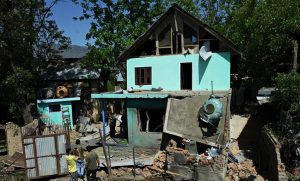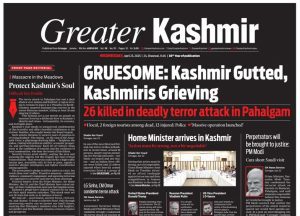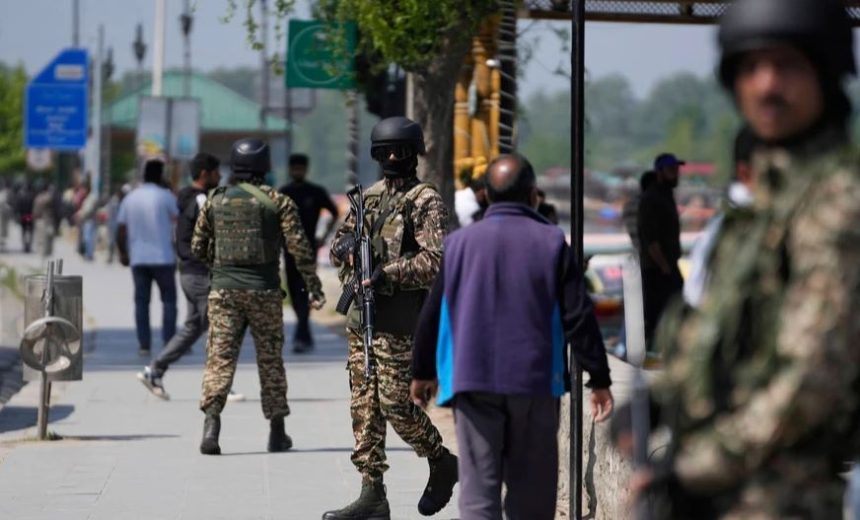A flood of misinformation is sweeping Indian television and social media in the aftermath of the recent terrorist attack in Pahalgam, Kashmir — a development that is stirring heightened emotions across the country.
Ten days after the April 22 attack that killed 26 people, mostly tourists, German broadcaster Deutsche Welle’s journalist Syamantak Ghosh filed a field report sharply criticising the Indian media’s coverage, calling it “a bizarre competition of theatrics.”
According to Ghosh, “Indian television has deviated far from the facts. A section of the media is using Kashmir as a stage for nonstop sensationalism.”
Amid rising fears that the Pahalgam attack could push nuclear-armed India and Pakistan toward direct confrontation, Syamantak Ghosh offered a grim portrayal of media behaviour at ground zero.
“I am sitting at Adil Thokar’s house,” wrote Ghosh. “Security forces suspect Adil was involved in the Pahalgam attack. As punishment, their house was demolished with an IED at midnight. Adil’s mother, Shahzad, now sits stunned at a neighbour’s place, staring silently at the ruins. Around her, TV reporters gather like a swarm, bombarding her with questions. One abruptly asks, ‘How did you feel when your house was being blown up?’ Shahzad’s eyes flicker briefly, then she responds firmly: ‘If Adil was truly involved in the incident, then I accept this punishment with my head bowed.’”

According to Ghosh, this single sentence was seized upon by TV networks and looped live almost instantly — just as it was at another Adil’s home, that of Adil Shah, who reportedly died trying to wrest a gun from the attackers to save tourists.
“His body was riddled with bullets,” Ghosh recounts. “Outside their small home by the Lidder River, his father sits under a canopy surrounded by media vans. Again, the same question repeated endlessly — ‘How do you feel after Adil’s death?’ His reply: ‘Dukh bhi hai, fakr bhi hai’ (There is pain, but also pride). That one sentence was recycled throughout the day. Every time he asked for a moment of peace, cameras closed in tighter.”
Ghosh does not spare fellow journalists in his critique: “We reached as close as one kilometre to the Line of Control (LOC) in the Uri sector. Alongside Deutsche Welle were several media crews, including TV reporters. Daily gunfire exchanges occur here, but they have not crossed the border. Yes, ceasefire violations are taking place, but locals understand the rhythm of conflict. They are not panicked—at least not yet. However, TV coverage paints a picture of shells landing at their feet. The dramatisation is extreme, portraying as if the reporters are broadcasting from a war zone, though the reality is far less dramatic.”

Citing journalistic ethics, Ghosh laments, “The media’s job is to convey news to the public. But when media starts creating the news, it becomes drama, not journalism. A large portion of Indian television is doing just that—inciting people, manufacturing division.”
He concludes ominously: “Who doesn’t want to be popular? But the lengths being taken to gain that popularity are not just troubling—they are frightening. And that fear is slowly consuming a nation of 1.4 billion. This is a strange game of make-believe war.”


